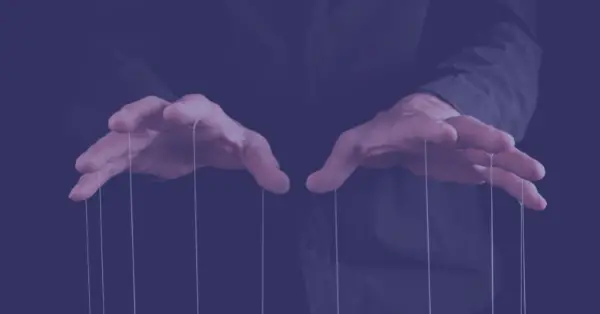CTR Manipulation: Influencing Click-Through Rate for Better Results
It’s no secret that click-through rate (CTR) is a key metric for gauging the success of any online advertising or content campaign. However, it can be difficult to influence and even more difficult to track.
CTR manipulation can be the difference between a successful campaign and one that falls flat. And yet, so many advertisers and SEOs are flying blind when it comes to this critical metric.
In this blog post, we will discuss what CTR manipulation is, how it works, and why people use it. We’ll also provide some tips on how you can protect yourself from CTR manipulation techniques.

What is CTR manipulation?
CTR manipulation is a technique used to influence click-through rate (CTR) for the purposes of generating better results. The technique takes advantage of human psychology in order to get users to click on an ad or a link.
CTR manipulation can be used for both good and bad. It is used in SEO and SEA alike. For example, it can be used to increase the click-through rate of an ad campaign in order to get more people to see the ad. However, it can also be used to create false clicks on an ad in order to inflate its CTR and waste the advertiser’s money.
How does CTR manipulation work?
In essence, CTR manipulation happens when a click on a search result or ad is conducted every time there is an impression. It can be on a micro-level of one marketer googling for their keyword just to click on the link, spend some time to increase the dwell time, and visit a second page to decrease the bounce rate. Alternatively, click on a competitor’s ad just to make them pay for the click.
This process can be scaled through traffic bots or services that use – or at least claim to use – real humans that do the very same thing.
The more real the interaction seems the better the result of the CTR manipulation. For example, clicking, leaving after milliseconds, and repeating the process 100 times is only possible by clicking CTR bots. On the other hand, if 100 website visits from a range of IP addresses with various user behaviors post-click happen, the manipulation seems real to Google and other search engines and will reward your SEO performance by ranking your web page higher in the SERPs (search engine results page).
CTR manipulation vs CTR optimization
It is important to understand the difference between CTR manipulation and CTR optimization. Both are ways to influence click-through rate, but they differ in their approach and intent.
CTR manipulation is a technique used to artificially inflate click-through rate. CTR optimization uses best practices and human psychology to improve the click-through rate naturally. Basically, it’s just good marketing that generates a click.
Some marketers refer to white hat optimization as manipulation. When someone speaks of good or ethical CTR manipulation, they don’t mean the shady artificial manipulation but rather the psychological manipulation (a.k.a. CTR optimization).

How does ethical CTR manipulation work? (CTR optimization)
As discussed above, CTR manipulation can be an ethical marketing tactic that just works on improving the metadata or ad copy to increase the likelihood of a real click from a real human user.
There are a number of ways that CTR optimization can work. Some common techniques include:
- Creating a sense of urgency: This technique relies on our natural inclination towards things that we perceive as scarce. When we see an ad with a ticking clock or a countdown timer, we’re more likely to click on it out of fear of missing out.
- Offering a discount: Everyone loves a good deal. By offering a discount or sale on your product, you can increase the likelihood that real people will click through to your site.
- Using social proof: Social proof is the idea that we’re more likely to do something if we see other people doing it. For example, if we see that our friends have liked a certain page on Facebook, we’re more likely to like it as well.
- Creating curiosity: Curiosity is another powerful psychological trigger. When we see something that piques our interest, we can’t help but click on it to learn more.
- Using fear: Sometimes we are more driven by fear. For example, the fear of losing something is greater than the satisfaction of keeping it. Save 20% of your annual income is great but creating the fear of the outcome to live paycheck-to-paycheck for the rest of your life might be greater. (This is just an illustration)
Why do people use CTR manipulation?
There are a number of reasons why people might use click-through rate manipulation advertising and SEO techniques. Some common reasons include:
- To increase traffic: The most common reason for CTR manipulation is to increase traffic to a website or landing page. CTR is an important SEO metric and major ranking factor and SEO experts try everything possible to rank higher and generate more organic traffic. By increasing the click-through rate, more people will see the ad or link and be directed to the site. Generally speaking, the higher the position in the ads and organic results, the higher the CTR and therefore the number of clicks.
- To improve conversion rates: Increasing traffic is one thing, but converting that traffic into customers is another. By using CTR manipulation techniques, businesses can increase their conversion rates and generate more sales.
- To waste money: As we mentioned before, CTR manipulation can also be used for nefarious purposes. Some people use CTR manipulation techniques to create false clicks on an ad in order to waste the advertiser’s money. Sometimes they even hire micro workers for pay-per-click and social media advertising CTR manipulation.
How can you protect yourself from CTR manipulation?
There are a few steps you can take in order to protect yourself from CTR manipulation techniques. Some tips include:
- Monitor your click-through rates: The first step is to keep an eye on your click-through rates. If you notice a sudden spike or drop in CTR, it could be an indication that someone is manipulating your paid ads.
- Track your conversions: In addition to monitoring your CTR, you should also track your conversion rates. This will help you determine whether the traffic being generated by click-through rate manipulation is actually resulting in sales or leads.
- Use fraud detection tools: There are a number of fraud detection tools available that can help you identify CTR manipulation and other types of fraud. By using these tools, you can safeguard your campaigns and avoid wasting money.
CTR manipulation is a technique that can be used for both good and bad. By understanding how it works and how to protect yourself from it, you can ensure that your campaigns are successful and avoid wasting money.

Sascha is a Lifecycle Marketing Consultant with over 8 years of digital marketing experiences in Silicon Valley, the UK, and Germany.
After leading the demand generation for a 100+ million company, he decided to venture out on himself. He’s now helping clients to attract and convert more leads and customers.
His main focus are SEO, paid media & marketing automation – all with the focus to tie marketing campaigns to revenue.
Sascha has been featured in industry publications.



